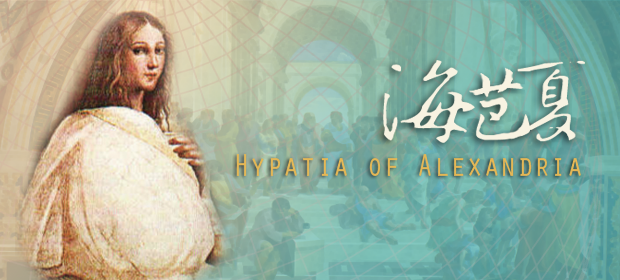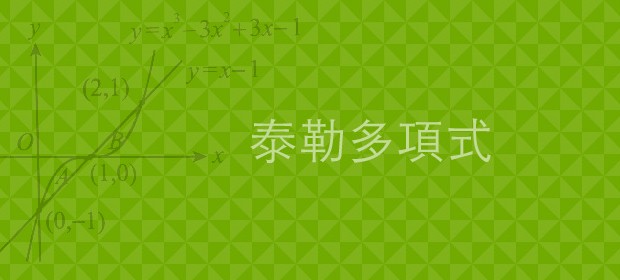希爾伯特的《幾何學基礎》與形式主義(Formalism and David Hilbert’s Foundations of Geometry)
希爾伯特的《幾何學基礎》與形式主義(Formalism and David Hilbert’s Foundations of Geometry)
國立臺灣師範大學數學系洪萬生教授/國立臺灣師範大學數學系洪萬生教授責任編輯
一般人若對於數學哲學流派中的形式主義(formalism)感興趣,那麼,最值得參考的經典文獻,莫過於希爾伯特(David Hilbert, 1862-1943)的《幾何學基礎》(The Foundations of Geometry)。這本書源自哥廷根大學 1898-1899年冬季班有關歐氏幾何課程的教材。
在英譯本的前言中,譯者E. J. Townsend 指出本書有下列五個特點:
- 在本書中,一個給定的公設系統之相互獨立性 (mutual independence) 與相容性(compatibility)藉助於新幾何系統之引進,而得以完全地討論。
- 歐氏幾何的最重要命題在本書中被演示,以致於可精確地顯現其中底蘊的公設以及此一演示(demonstration)如何可能。
- 在本書中,全等公設(axioms of congruence)被引進而成為幾何位移(geometric displacement)的定義之基礎。
- 在歐氏幾何的發展中,許多最重要的公設和定理之意義被清楚地顯現,例如,本書證明整個歐氏幾何學不須運用連續性公設(axiom of continuity)也可以發展起來;又如笛沙格定理(Desargues’s theorem)作為給定平面幾何可被視為空間幾何一部份的一個條件之意義,也被凸顯出來等等。
- 在本書中,線段的好幾種代數(a variety of algebras of segments)以符合算術律的方式被引進。
如果不深入研讀本書,上述這五點恐怕很難體會。不過,正如前述,要想認識或體會形式主義,則本書第1章第1節實在非常「經典」(classical),值得引述如下:
§ I. THE ELEMENTS OF GEOMETRY AND THE FIVE GROUPS OF AXIOMS.
Let us consider three distinct systems of things. The things composing the first system, we will call points and designate them by the letters A, B, C, .…; those of the second, we will call straight lines and designate them by the letters a, b, c, .…; designate them by the Greek letters α, β, γ, .…The points are called the elements of linear geometry; the points and straight lines, the elements of plane geometry; and the points, lines, and planes, the elements of the geometry of space or the elements of space.We think of these points, straight lines, and planes as having certain mutual relations, which we indicate by means of such words as “are situated,” “between,” “parallel,” “congruent,” “continuous,” etc. The complete and exact description of these relations follows as consequence of the axioms of geometry. These axioms may be arranged in five groups. Each of these groups expresses, by itself, certain related fundamental facts of our intuition. We will name these groups as follows:
- 1-7. Axioms of connection.
- 1-5. Axioms of order.
- Axiom of parallels (Euclid’s axiom).
- 1-6. Axiom of congruence.
- Axiom of continuity (Archimedes axiom).
在上述引文中,希爾伯特所考慮的「事物」(thing)的三個相異系統,後來被他分別稱為點、直線和平面。這些事物如點 (point)、直線 (straight line)、平面 (plane),隨即被希爾伯特稱為幾何學的元素 (element)。
然後,他又接著指出說:「我們認為這些點、直線和平面,具有某些相互關係,而我們是藉由有如下列『位於』、『在(兩者)之間』、『平行的』、『全等的』、『連續的』等文字來指出。至於這些關係的一個完備的、確當的描述,則是幾何公設推演的結果。」
正如上引,希爾伯特將這些公理分為五群,各自表示了「我們直觀的某些基本事實。」所謂「事物」的提法,令人想出歐幾里得在他的《幾何原本》(The Elements)中「共有概念」(或公理)(common notions)中的「事物」(thing):
- Things which are equal to the same thing are also equal to one another.
- If equals be added to equals, the wholes are equal.
- If equals be subtracted from equals, the remainders are equal.
- Things which coincide with one another are equal to one another.
- The whole is greater than the part.
不過,這些並非希爾伯特的關注興趣所在。
因為他所指的歐幾里得平行公理是:(Euclid’s axiom):“In a plane α there can be drawn through any point A, lying outside of a straight line a, one and only one straight line which does not intersect the line a. This straight line is called the parallel to a through the given point A.”
這一公理當然與歐幾里得《幾何原本》中的第五設準 (postulate) 等價:「同平面內任一條直線和另外兩條直線相交,若在某一側的兩側內角的和小於兩個直角,這兩條線經任意 (indefinitely) 延長後在這一側相交。」(That, if a straight line falling on two straight lines make the interior angles on the same side less than two right angles, the two straight lines, if produced indefinitely, meet on that side on which are the angles less than the two right angles.)
同時,我們也不應該忘記:在這五條設準之前,有共同的一句話:「令下列被假設成立」(Let the following be postulated) - 其實,這也解釋了英文版的第五設準前何以出現英文字 “That”。相反地,在「共有概念」之前,就無此規範了。可見,對於歐幾里得而言,共有概念與設準是不一樣的公設或公理。但是,對於現代數學而言,那五個共有概念已經沒有意義了。
至於所謂的「事物」是否存在,當然不須「操煩」,因為形式主義原來就主張數學不過是一種沒有意義的符號遊戲罷了 (Mathematics is a symbolic game without meaning.)。既然如此,學習數學本身又如何賦予意義呢?這是形式主義的永恆困境,當然無法解決。希爾伯特原來滿心期待他可以解決完備性(completeness)問題,以便至少在結構上對數學知識本質賦予意義,不幸,由於哥德爾 (Godel) 的不完備定理 (incompleteness theorem),而讓他功敗垂成。
參考書目:
- 比爾‧柏林霍夫、佛南度‧辜維亞 (2008).《溫柔數學史》(Math through Ages: A Gentle History for Teachers and Others),台北:博雅書屋。
- 莫理斯‧克萊因 (2004).《數學:確定性的失落》(Mathematics: The Loss of Certainty),台北:台灣商務印書館。
- 哈爾‧赫爾曼 (2009).《數學恩仇錄》(Great Feuds in Mathematics: Ten of the Liveliest Disputes Ever),台北:博雅書屋。
- 阿波斯托羅斯等 (2010).《數學邏輯奇幻之旅》(Logicomix: An Epic Search for Truth),台北:繁星多媒體公司。
- 高瑞夫、哈托許 (2009).《爺爺的證明題》(A Certain Ambiguity: A Mathematical Novel),台北:博雅書屋。
- Euclid (1956). The Thirteen Books of The Elements Vol. 1 (translated with introduction and commentary by Sir Thomas L .Heath). New York: Dover Publications, INC.
- Hilbert, David (1902/1965). The Foundations of Geometry (translated by E. J. Townsend). The Open Court Publishing Co.


 前一篇文章
前一篇文章 下一篇文章
下一篇文章 海芭夏 (Hypatia of Alexandria)
海芭夏 (Hypatia of Alexandria)  泰勒多項式(2) (Taylor Polynomials(2))
泰勒多項式(2) (Taylor Polynomials(2))  惠更斯 (Christiaan Huygens) 專題
惠更斯 (Christiaan Huygens) 專題 
